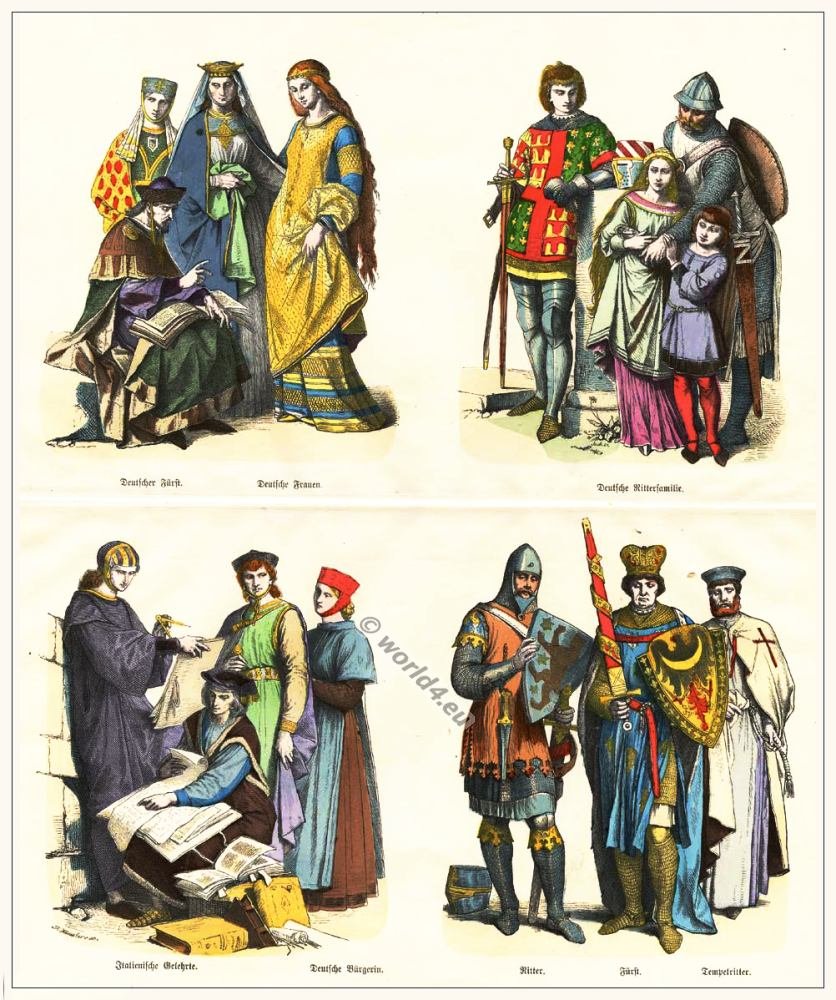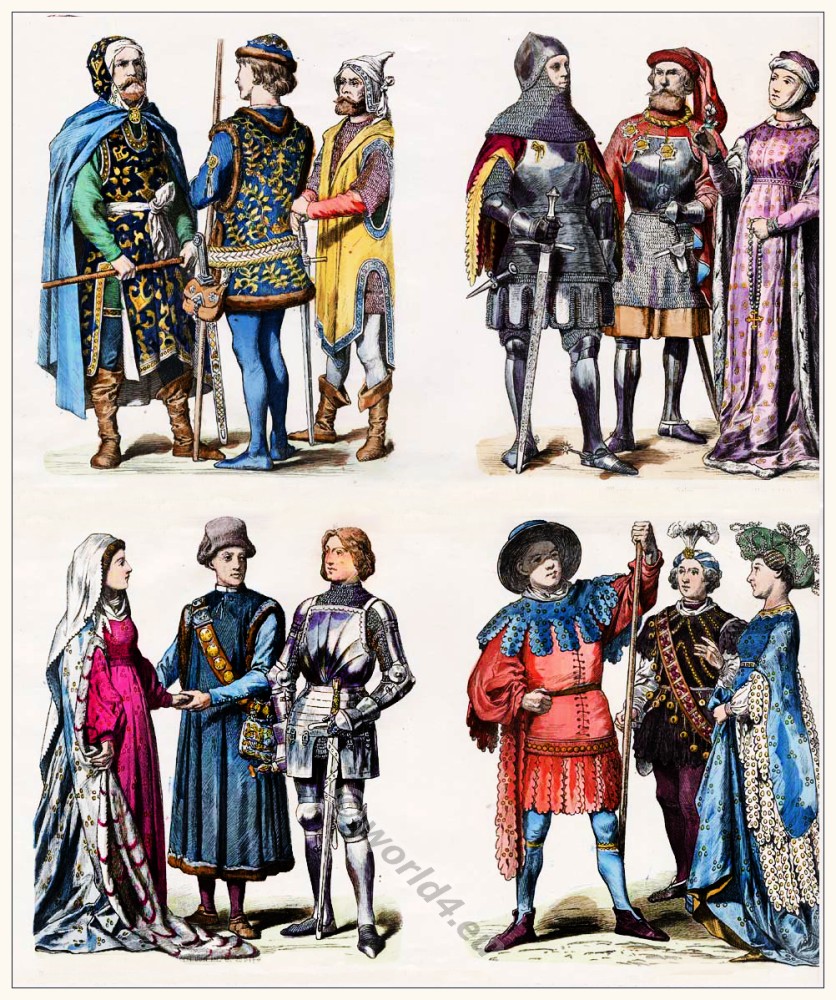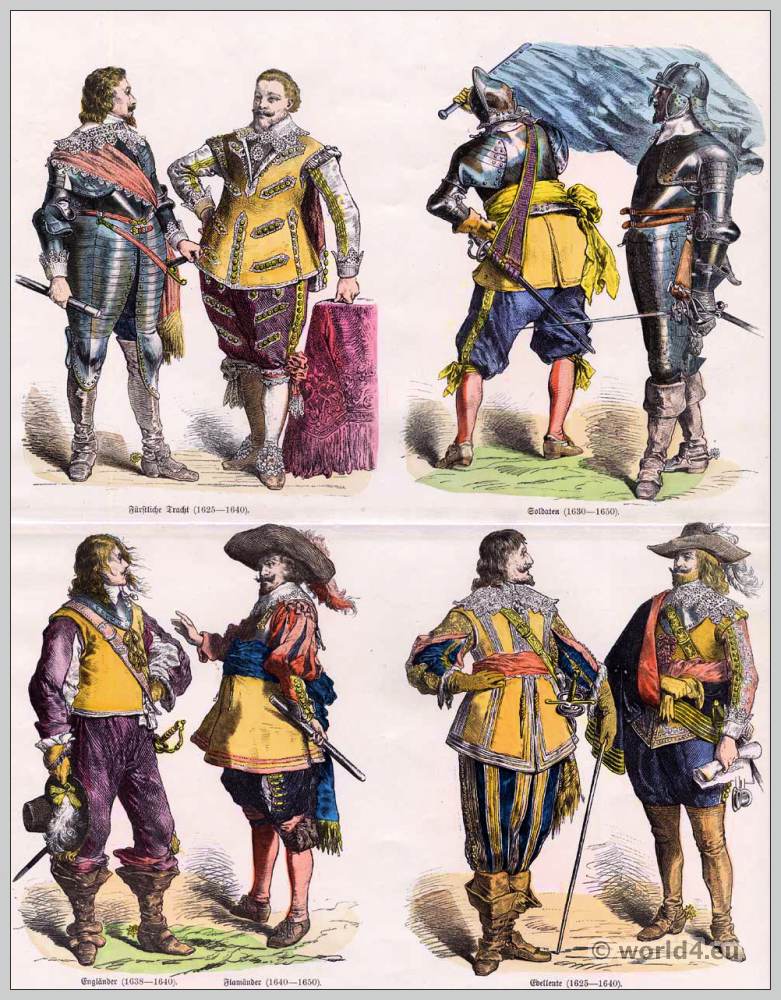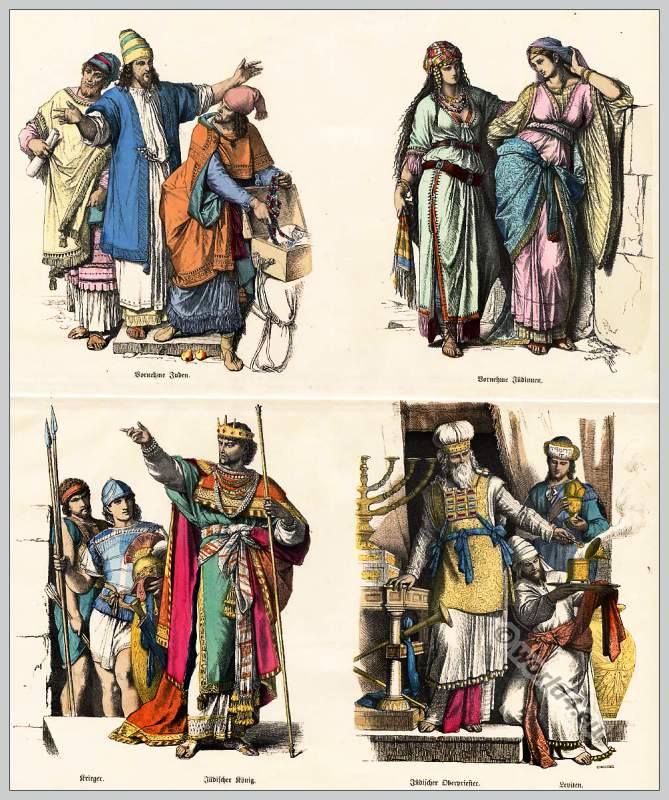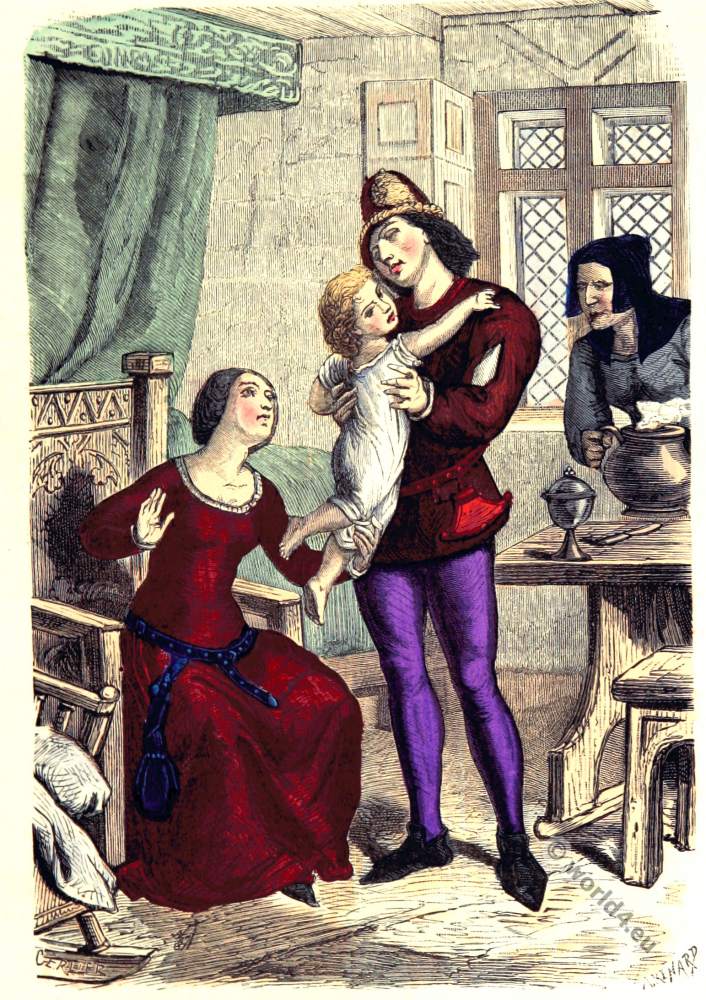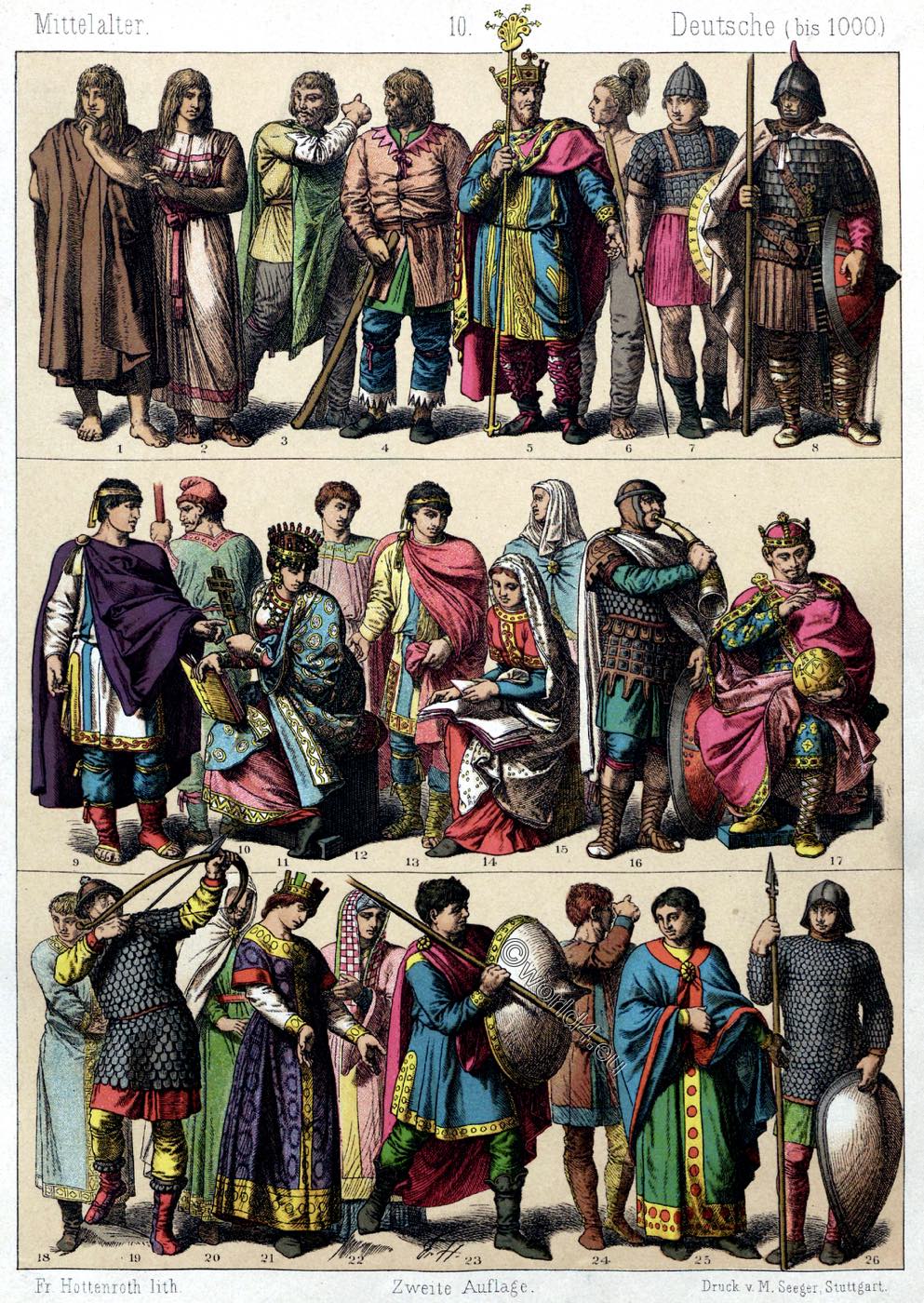
German clothing up to the 10th century. Goths, Lombards, Merovingians, Carolingians in the Middle Ages.
Germans (up to 1000).
Plate 10
- 1, 2 man and woman of the first historical time;
- 3, 4 Goths;
- 5 Lombard king;
- 6, 7 Merovingian Franks;
- 8-17 Carolingian Franks;
- 16-26 people at the end of the 10th century.
The Goths
The Goths were an East Germanic people who were involved in military conflicts with the Romans on several occasions since the 3rd century. During the late antique migration period, first the Visigoths and then the Ostrogoths formed their own empires on the soil of the Imperium Romanum, which fell in 711 and 552 respectively.
The origin of the Goths is disputed. At the turn of the century a people settled in the area of the mouth of the Vistula, which was known to ancient authors like Tacitus under the name Gotonen (Gutonen; Gothic Gutans). The name is often derived from the Gothic word giutan (“pouring”) or gutans (“poured”) and is interpreted as “pourer”.
According to reports from Jordanes, the Goths originally came from Scandinavia, but according to most historians this is a fiction that served to increase the prestige of the Goths.
Starting from the assumption that the Gutons were the ancestors of the Goths, the assumption is supported that in the second half of the 2nd century a part of the people moved southeast to the Black Sea. Other researchers, on the other hand, argue that the Goths did not develop as a separate ethnic group until the Black Sea region and thus before the Roman border (see ethnogenesis).
The Lombards
The Lombards were a sub-tribe of the Suebian tribe, closely related to the Semnones, and thus an Elbe-Germanic tribe that originally settled on the lower Elbe. Lombards invaded the Roman Empire in 166 AD at the beginning of the Marcomannic Wars as part of a plundering campaign.
The Lombard land grab in Italy is regarded as the last migration of the Late Ancient peoples and thus as a possible date for the end of Antiquity and the beginning of the Early Middle Ages in this region.
In 567, after long battles, the Lombards destroyed the Gepiden Empire together with the Avars. Already in the following year most of the Lombards moved to Italy, accompanied by Gepids, Thuringians, Sarmatians, Suebians, Pannonians and Noricans. Whether they had to give way to Avaric pressure, as it was mostly assumed in former times, whether they had the rich peninsula in mind from the beginning or were even invited by Narses, is disputed.
In any case, from April 2, 568 under King Alboin they conquered large parts of Italy, which they had got to know in 552 as a still relatively rich country. Together with other Germanic tribes, they advanced further south, but were unable to conquer the entire peninsula: about half of the country remained under the control of the Eastern Roman Empire.
The Merovingians
The Merovingians were the oldest royal dynasty of the Franks from the 5th century to 751 and were replaced by the Carolingian dynasty. The historical epoch of the transition from Late Antiquity to the Early Middle Ages in the Gallic-Germanic area is called the Merovingian period after them.
The Carolingian
Carolingian is the house name of the ruling dynasty of the West Germanic Franks, which goes back to Karl Martell and held the royal title in the Frankish Empire from 751. Its most famous representative was Charlemagne, from whom the later Carolingian rulers descended.
Source: Costumes, house, field and war tools of the peoples of old and new times by Friedrich Hottenroth. Stuttgart Publisher by Gustav Weise 1884.

